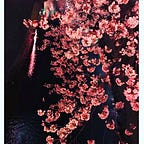Winter. And some eating.
Tomorrow will be exactly a year since I got to Beijing. I arrived here in the middle of winter, and I was thoroughly, woefully under-prepared for just how incredibly, uh, wintery it would be.
No, really. Beijing’s winter is not to be messed with. It’s intense. Cold winds blow in from Siberia, freezing faces, numbing fingers and making the chill tunnel its way through the thickest of layers. You find yourself constantly rushing between places. Every moment spent outdoors is a moment spent trying to make your way into the reassuring warmth of the nearest (preferably centrally heated) Indoors.
It gets a tiny bit better after the aforementioned central heating, provided by the government in northern China, actually kicks in, around mid-November. But when you’ve grown up in fucking Bombay your entire life, yeah, it’s always, always way too cold here. And so damn dry, it makes you mortally afraid of every single staticky tap in the house. The heat setting on the AC continues to remain on because the central heating is too fucking feeble, though it’s pretty nice to leave a spare towel on the pipe thingamajigs so you can wrap yourself all up in its toastiness post-shower-and-sprint-from-bathroom-to-room.
There’s a couple of things that make suffering through the Beijing winter almost worth it though. One is the frankly unhealthy number of great-hair-days I have had. No really, the air is so fucking dry, my hair is on point, falls just right and is generally so damn smooth and shiny, I want to run my hands through it and then grab fistfuls of its gorgeousness and then pin myself against the wall an— uh, whatwerewetalkingaboutagainohyaHAIR. HAIR. Winter. Yes.
The second, now that we have awkwardly moved on, is the food. The goddamn fucking gloriousness of Chinese food. From the smouldering deliciousness of malatang to the darling jianbing that tastes especially good on winter mornings and makes the pain of having peeled yourself from your bed entirely bearable. Winter is the best time to stuff yourself with the fire of Sichuan and Hunan cuisines, waddle in for way too many hotpots, and commit yourself to Bottomless Baozi endeavours. And as I eat my way through my second winter in my new home, I present to you a list of my (in no particular order) favourite Beijing winter foods. Ready, set, nyumnyumnyum:
Jianbing
I mean, I wrote a goddamn essay about this. It’s frankly beautiful. A cracked egg or two on a thin pancake, slathered with chilli and hoisin sauces, with scallions and pickles (pao cai) liberally sprinkled on, topped with a crispy fried square called baocui, rolled up and handed to you in paper or plastic bag. Six kuai (the colloquial Chinese term for yuan) wonly please. The midnight jianbing carts near my apartment sell it for five. Best meal when you’re on your way home from the airport and the restaurants are all shut and the thought of making even a damn sandwich makes you want to cry.
Malatang
Beijing winters are perfect for malatang. It’s best described as a kind of steaming spicy broth with noodles and an assortment of delicious things (everything from meats and lotus root and tofu, to mushrooms and taters and bok choy) dunked in. I’ve absolutely no idea why this absolutely gorgeous dish isn’t more popular outside of China.
Malatang shops are pretty popular in Beijing (and elsewhere in northern China like freezing Harbin, for instance). You grab a bowl and tongs, pick the ingredients you want in your malatang, and then hand it over behind the counter. It’s weighed and you’re charged accordingly, after which it’s all tipped into a boiling broth, and cooked for a few minutes. Best enjoyed by adding way, way too much peanut sauce, right before you dig in.
Tanghulu
Tanghulu is basically candied fruit on a stick. Strawberries, hawthorn berries, cherries, mandarin oranges — they’re skewered, dipped in a fuckton of sugar syrup, and will occasionally be sprinkled with sesame or or chocolate coating. I like them plain and sugary, and can only finish half of the bigass stick but it’s rather fun to walk about going crunch-crunch-crunch. These suckers are good. Just… keep them away from your hair. We live and learn.
Baozi
These steamed buns stuffed with everything from pork and scallions, to eggs and leeks, are my absolute damn favourite breakfast food, second only to jianbing. I found this one tiny restaurant in the hutong-veined Guloudajie neighbourhood via a friend who lives there, which sold ten freshly steamed baozi around breakfast time (no later than 9am) for six kuai that you took away in a little bag, perfect to eat on your walk to the subway.
Nang
Similar to a really crisp naan. This snack can be traced to the Xinjiang Uyghur Autonomous Region in the northwest. It’s much less common in Beijing. I had stumbled onto a vendor selling these crispy flatbreads near a subway stop (I cannot for the life of me recall which one it was) and I had bought one — flecked with sesame — onto which he sprinkled salt before handing it to me. That was it: flatbread, sesame, salt. It was crispy and it was delicious and I had no idea what it was called and a bunch of my colleagues couldn’t seem to understand what exactly I had eaten either when I described it later and it took me and a friend at work literal days to finally zero in on the name. And alas, I have not been able to find another vendor selling nang after that one time. Perhaps this winter? I’m optimistic.
That’s when you’ll get a picture.
